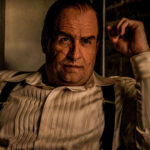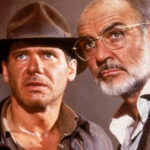

“The Sixth Sense” is a film that has continued to captivate and intrigue audiences since its release in 1999. Directed by M. Night Shyamalan, the psychological thriller quickly became a classic, known for its surprising plot and shocking final twist.
The story revolves around Cole Sear, an eight-year-old boy who claims to see and communicate with the dead, and the psychologist who tries to help him understand and cope with his visions.
The film is notable not only for its engaging narrative but also for the details and creative choices that contribute to its unique atmosphere. In this text, we will explore some fascinating trivia about “The Sixth Sense” that you might not know, from behind-the-scenes production to small details that add depth to the cinematic experience. Get ready for a revealing journey into one of the biggest hits of the 90s.
1 – CASTING SELECTION
Casting actors for a film is a crucial and often complex stage in production. Various factors come into play: the actor’s ability to portray and react to scenes, their immersion in the role, and the details observed during auditions and readings. Sometimes, it feels as if certain actors are the perfect fit for specific roles, or that the role was written specifically for them. In the case of “The Sixth Sense”, M. Night Shyamalan had indeed envisioned the character of Malcolm Crowe for Bruce Willis.
For the role of Cole Sear, Haley Joel Osment was Shyamalan’s choice for three main reasons: first, he stood out among the candidates; second, he was the only boy in the cast wearing a tie; and third, when asked about reading the role, Osment mentioned that he had read the script three times, surprising Shyamalan.
As for Toni Collette, who played Lynn Sear, she only realized she was in a horror film when it was released. During the audition, Shyamalan was concerned about her appearance, as Collette had a shaved head.
To handle the situation with the studio, Shyamalan decided that Collette would wear a wig during filming, which, according to the director, was borrowed.
2 – THE CHILD ACTORS
Filming children in horror movies can be challenging, as the themes addressed are not always suitable for all ages. However, for Mischa Barton, who played Kyra Collins, the experience was not as traumatizing as one might imagine. In an interview with Variety, Barton revealed that despite others’ concerns about the impact of the scenes, she, at just 13 years old, managed to handle the material well.
Her sister, however, had a different reaction. During a session in the ADR room (for dubbing and audio adjustments), where Barton brought her younger sister, the child was so frightened that she had to be taken out. “It was the scariest thing I’ve ever seen,” Barton’s sister reported.
To create the effect of smoke coming out of Cole’s mouth whenever he is near ghosts, the production used a method involving placing Haley Joel Osment in an extremely cold environment. In another interview with Variety, Osment explained that the set was covered and a stream of cold air was introduced to achieve the desired effect, with careful attention to limit the exposure time to avoid health issues.
Barton also faced similar challenges. She had to choose between cereal or banana for a mixture she was supposed to keep in her mouth until the moment of vomiting on screen. Although the situation was uncomfortable, Barton handled it with great professionalism.
3 – THE RED HIN
If you pay close attention to the film, you’ll notice that the color red appears very rarely and always for a specific reason: it indicates when something from the “real” world is impacted by the reality of the “other world.” This includes objects and locations affected by supernatural forces. The idea is that, just as haunted houses are said to reflect intense emotions from past events, these objects also carry those echoes.
Additionally, the color red is used to intensify important emotional moments, serving as a warning signal.
4 – PROBLEMS WITH DISNEY
When the script for “The Sixth Sense” began to circulate, M. Night Shyamalan demanded a minimum selling price of $1 million and that he would be the film’s director. In an interview with The Hollywood Reporter, Shyamalan stated: “If they want to read it, they need to know that the starting price is $1 million”. David Vogel, then the head of production at the studio, attempted to avoid an auction and purchased the film’s rights for US$ 2.25 million, without consulting the corporation, which led to problems.
After Vogel’s decision, Disney executives requested that he revise his contract and relinquish some of his powers, and his refusal resulted in his dismissal.
Disney, initially skeptical about the film’s potential, left the responsibility to Spyglass Entertainment, retaining only 12.5% of the box office. The film grossed US$ 672.8 million worldwide and became the best-selling DVD of the 2000s.
Bruce Willis also faced issues with Disney. During the filming of “Broadway Baller,” he fired the director and part of the crew after 20 days, resulting in the project being shelved. To resolve the lawsuit related to the dismissal, Willis agreed to pay US$ 17.5 million, the amount spent up to that point, and committed to three more films with the studio.
The first was “Armageddon” in 1998, the second was “The Sixth Sense,” and the third was “Two Lives” in 2000.
5 – FILMED IN SEVERAL LOCATIONS
The film was shot in various locations in Philadelphia and its surroundings, which contributed to the film’s unique atmosphere and sense of realism.
6 – THE USE OF MIRRORS
Many critics have noted that the use of mirrors in the film helps emphasize the themes of identity and perception, reflecting the nature of the characters and their realities. Mirrors are used to show Cole’s perspective and how he perceives the spirits around him. They help highlight the difference between what the living characters see and what the dead experience.
In one key moment, the mirror is used to symbolize Malcolm Crowe’s shift in perception about his own life and death.
The scene where he finally realizes he is dead is accentuated by the use of the mirror to reflect this realization.
7 – THE BIG REVEAL
One of the great moments of “The Sixth Sense” is the revelation of the final twist, which is where all the film’s magic comes together. To keep the secret that Malcolm was dead all along, every effort was made to prevent anyone from discovering it prematurely. This strategy was largely successful, with few clues left, and during test screenings, no one noticed anything. One of the subtle hints was the camera’s close-up on Cole’s face when he talks about seeing dead people.
However, if you weren’t lucky enough to see the film at its premiere and ended up encountering the soundtrack in a record store, you would have had a surprise: the last track on the CD is titled “Malcolm is Dead.”
In conclusion, “The Sixth Sense” is a film full of fascinating details and trivia that further enrich the experience. From the careful casting and the challenges faced during production to the subtle visual and auditory tricks, every aspect of the film contributes to its aura of mystery and impact.
M. Night Shyamalan’s skill in keeping the final twist a secret and the intelligent use of the color red as a sign of supernatural events demonstrate the depth and creative ingenuity involved in the making of the film.
Even years after its release, the film continues to surprise and captivate, proving its status as a classic in the psychological thriller genre.
These curiosities not only highlight the care put into creating the film but also enrich how audiences perceive and appreciate it.








